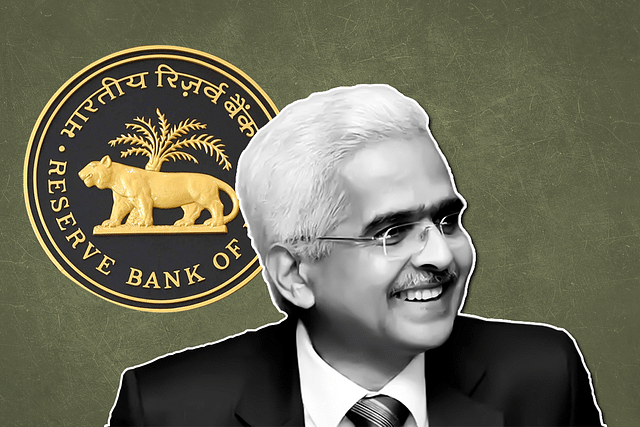
RBI Policy: The Message From Mint Street Isn’t Encouraging Enough
The message from Mint Street isn’t encouraging.
While the Finance Ministry has taken some steps to revive growth, the Monetary Policy Committee is yet to wake up and correct its past mistakes.
The less I want to talk about monetary policy, the more the MPC makes me write on it. At this moment one has a long list of questions that they’d like the RBI governor to explain. Unfortunately, unlike the United States of America, where the Fed Chairman does testify, we don’t have any such provisions for our monetary master.
I’m a big believer in central bank independence and having the governor testify ensures a certain level of accountability and transparency in terms of explaining the rationale behind their decisions.
Such a system would have ensured that the governor addresses all such questions that he has raised through the current modest repo cut of 25 basis points.
In my opinion, it is too little – and very likely to be inconsequential for many reasons. The fact that RBI governor feels that real rates framework cannot be accepted as it would be difficult for the RBI to maintain multiple targets is only a poor reflection on the sense of understanding of the interaction of macroeconomic variables.
Macro 101 says: real variables matter rather than nominal variables. That is, one must look at real repo rates and not just repo rates. Our real repo rates at present are at approximately 2 per cent.
This is an improvement from before and there’s absolutely no denying that the RBI has been proactive in terms of cutting interest rates. But, Dr Michael Patra stated that in their view the neutral real repo rate would be close to 1.25 per cent.
That is, at a real rate of 1.25 per cent, the monetary policy is neither accommodative nor contractionary in nature. At a rate higher we have a contractionary monetary policy and at a lower rate we have an expansionary monetary policy.
The first question worth asking is, what does it mean for the monetary policy to be accommodative as stated by the MPC at a time when real rates are higher than their specified neutral real rates?
At 2 per cent, we have a monetary policy that would be contractionary in nature so what exactly does the accommodative stance imply? Does it simply imply rate cuts? If yes, then they should explicitly mention the neutral rate and how far we’re from the same.
The other important thing is to do with the output gap. The previous meeting saw the governor cut interest rates by 35 basis points. After this, we saw a growth figure for Q1 at 5 per cent.
Till then, the MPC maintained its growth forecast at 6.9 per cent – which was always suspect. While the RBI may be surprised with Q1 growth at 5 per cent, it didn’t surprise me as it was a very likely scenario based on my forecast.
The RBI today further reduced its growth forecast to 6.1 per cent further accepting that the output gap is likely to have further widened than anticipated by the MPC.
Despite a further widening of output gap and inflation figures at the same level, we saw the RBI cut interest rates by 25 basis-point, when previously they had reduced it by 35 basis-point.
The understanding may have been that if 110 basis-point cut didn’t work then maybe a cumulative 135 basis-point cut might work but unfortunately, monetary policy doesn’t function that way.
With benign inflation and further widening of output gap we should have seen at least a 50-basis-point cut to take us closer to the real neutral rate and an additional 25-35-basis-point cut or so in December to have a more accommodative monetary policy.
The idea at present is to have a real rate that’s lower than the neutral real repo rate and this looks possible only if inflation were to increase, as clearly the MPC is in no mood to be bold!
It is important to recognize that RBI itself doesn’t see any inflationary pressures in the near future and therefore, one must question the reason behind a 25-basis-point cut. We must take a look at the measures announced by Mario Draghi or the rate cuts announced by Jerome Powell. The real rates there are significantly lower than they are in India.
In fact, over the last couple of years, one can argue that neutral real rates across the world have reduced. Therefore, very likely, India’s neutral real rates may well be lower than 1.25 – in which case we’re still far away from having an accommodative monetary policy.
The message from Mint Street isn’t encouraging as it signals a sense of reluctance to learn from their mistakes. The high real interest rates combined with the NBFC crisis have acted as a drag on our growth and while the MPC revised its growth forecast to 6.1 per cent from 6.9 per cent, they’re yet to take action to address the same.
The Finance Ministry has done all it can to revive growth; but we all wonder when the MPC will wake up and correct its past mistakes!